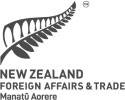Weekly Global Report:
On this page
Trade and Economic Updates
Global
IMF sees mixed global inflation picture in the face of higher tariffs
The International Monetary Fund notes that inflation trends are diverging. Core inflation is rising in the US and other advanced economies, while in China and some parts of Asia, weaker export demand is keeping inflation muted. Firms in many places are absorbing tariff cost increases, which is delaying passthrough to consumers. However, slowing demand and trade frictions are being flagged as risks. Read more here(external link).
Europe
European steel import quotas
The European Commission plans to halve steel import quotas and impose a 50% tariff on volumes exceeding those quotas, as it grapples with overcapacity and pressure from domestic steel industries. The full suite of measures for the EU’s steel sector will be announced on 7 October. Read more here(external link).
Americas
US announces new tariffs following the section 232 investigation into timber/lumber
On 29 September, the US issued a Proclamation(external link) and an associated Annex(external link) following the Department of Commerce’s investigation into imports of timber, lumber, and their derivative products under section 232 of the Trade Expansion Act of 1962. This had been foreshadowed by several Truth Social posts from President Trump the previous week. The Fact Sheet(external link) clearly sets out the following:
- The Proclamation imposes a 10% global tariff on imports of softwood lumber from 14 October.
- The Proclamation imposes a 25% global tariff on certain upholstered furniture, which will increase to 30% on 1 January.
- The Proclamation imposes a 25% global tariff on kitchen cabinets and vanities, which will increase to 50% on 1 January.
- Other wood products that are not subject to these Section 232 tariffs will generally be subject instead to reciprocal tariffs.
- The treatment of products on the list of Potential Tariff Adjustments for Aligned Partners (PTAAP) remains unchanged unless an antidumping or countervailing duty order applies.
For New Zealand, this means that exports of sawn timber will face a 10% tariff (plus whatever the MFN rate is) from 14 October – the relevant HS codes are listed in the Annex. Exporters of other timber products, such as MDF, will face New Zealand’s ‘reciprocal’ rate of 15% (plus whatever the MFN rate is) from 14 October. Exporters of certain upholstered furniture, kitchen cabinets and vanities will face a 25% tariff (plus whatever the MFN rate is). Unlike some previous orders, the tariffs will be applied from the 14 October date, and there will be no grace period for product on the water – unless it clears US Customs before 14 October. MFAT’s Tariff Finder may take some time to update so please contact us directly at us.exports@mfat.govt.nz if you have any questions about your specific product.
South and Southeast Asia
Southeast Asian growth remains strong in Q2
According to a report by the McKinsey Institute, the second quarter of 2025 saw stronger-than-expected growth across most Southeast Asian economies, driven by businesses front-loading trade and production during the temporary 90-day pause in U.S. tariffs. Vietnam led the region with its best first-half performance in over a decade, while Indonesia, the Philippines, and Singapore also posted solid growth. Malaysia maintained its pace, but Thailand lagged due to a decrease in tourism and domestic consumption.
Key growth drivers included:
- Industrial activity rebounding on stronger demand for exports.
- Domestic consumption remaining steady thanks to low inflation and stable labour markets.
- Investment showing mixed signals amid cautious market sentiment and dovish policy stances.
- Despite the Q2 boost, McKinsey warns of a more challenging second half of 2025, as the effects of front-loading fade and the full impact of the US tariffs begins to weigh on regional economies
North Asia
South Korea rides AI chip boom — export surge offers lessons
South Korea saw a much higher than expected 12.7% year-on-year rise in exports in September, as global demand for semiconductors rose sharply. Chip exports alone jumped 22%, while auto exports also saw solid gains. Read more here(external link).
K-Food exports hit NZD 17 billion, driven by global appetite for Korean cuisine
South Korea’s exports of food and agro-fisheries products surpassed NZD17 billion in record time this year, reaching the milestone over two weeks earlier than in 2024. The US was the largest market, importing NZD2.89 billion worth of goods (up 15.3%), followed by Europe at NZD1.31 billion (up 15.8%) and the Gulf Cooperation Council countries at NZD503 million (up 9.6%). By product, instant noodles (ramyeon) led with NZD1.87 billion in exports (up 24.7%), followed by dried seaweed (gim) at NZD1.49 billion (up 14.1%), and Korean sauces like chilli paste (gochujang) at NZD535 million (up 9.2%). The growth reflects the rising global popularity of Korean cuisine and the expansion of Korean restaurants abroad.
China’s manufacturing sector decline deepens
China’s manufacturing sector continued its downtrend in September, with the Purchasing Managers’ Index (PMI) falling to 49.8, marking six consecutive months below the 50-point growth threshold. Weak domestic demand, a cooling property sector, and trade friction (especially with the US) are all contributing to this decline. Read more here(external link).
Feedback
We welcome feedback from New Zealand exporters on this report and invite requests for reporting from New Zealand’s network of Embassies and High Commissions. If you have suggestions on a topic you would like to hear more about, or to subscribe to this weekly update, you can sign up here(external link) or email us at exports@mfat.govt.nz
Market reports released this week
- Read the previous global economic round-up
- Poland's Supplement Boom: Strategic Insights for Kiwi Market Exporters
A full list of global economic round-ups can be found here(external link)
If you would like to request a topic for reporting please email exports@mfat.govt.nz
External links
The following links may provide useful information to businesses:
NZTE’s website(external link) and their myNZTE(external link) provides a range of insights and tools available to support New Zealand exporters.
The Treasury releases a weekly economic update(external link) every Friday. Stats NZ has published a data portal(external link) with near real-time economic indicators.
MBIE publishes a sector reports series(external link) which provides regularly updated reports on all industry sectors that make up the New Zealand economy. These include official economic data and the challenges and opportunities that face New Zealand’s industry sectors.
Business.govt.nz(external link) provides tools and advice from across government to save small businesses’ time and help make the business a success.
MFAT has created a tariff finder(external link) which is designed to help goods exporters and importers maximise benefits from New Zealand’s Free Trade Agreements and compare tariffs in 136 other markets.
The all of government Trade Barriers(external link) website can be used to register any trade barriers experienced or issues exporting to an offshore market. Queries can be sent via the website or through the MFAT Exporter Helpline 0800 824 605. Enquiries will be sent to the government agency best placed to answer.
Tatauranga Aotearoa Stats NZ provides official data on the value of New Zealand’s exports and imports of both goods and services, by commodity type via the New Zealand Trade Dashboard(external link). This interactive dashboard is updated every quarter and allows for filtering by country and by commodity type.
Sign up for email alerts
If you would like to subscribe to this weekly update, go to our subscription page(external link) or email us at exports@mfat.govt.nz
Learn more about exporting
New Zealand Trade & Enterprise’s comprehensive market guides(external link) cover export regulations, business culture, market-entry strategies and more.
Disclaimer
This information released in this report aligns with the provisions of the Official Information Act 1982. The opinions and analysis expressed in this report are the author’s own and do not necessarily reflect the views or official policy position of the New Zealand Government. The Ministry of Foreign Affairs and Trade and the New Zealand Government take no responsibility for the accuracy of this report.
Copyright
Crown copyright ©. Website copyright statement is licensed under the Creative Commons Attribution 4.0 International licence(external link). In essence, you are free to copy, distribute and adapt the work, as long as you attribute the work to the Crown and abide by the other licence terms.

